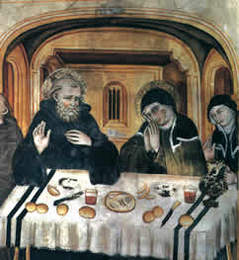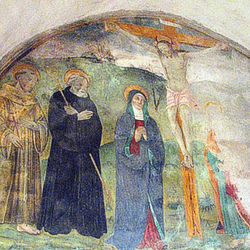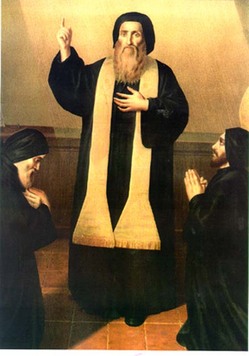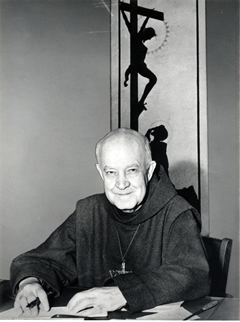 On this the feast of the great Saint Scholastica, the twin sister of Saint Benedict, I thought it would be appropriate to hear a few words about the significant connection between the Benedictines (Sts Benedict & Scholastica and Pope Benedict) and Father Luigi Giussani.
On this the feast of the great Saint Scholastica, the twin sister of Saint Benedict, I thought it would be appropriate to hear a few words about the significant connection between the Benedictines (Sts Benedict & Scholastica and Pope Benedict) and Father Luigi Giussani.
Signs of spiritual friendship
by Don Giacomo Tantardini (In 30 Days, May 2005)
…The hundredfold is not the outcome of a project, of a program. My real program of government is that of not doing my own will, of not following my own ideas, but of setting myself to listen, with the whole Church, to the word and will of the Lord and let myself be led by Him, so that it is He Himself who leads the Church in this hour of our history, Benedict XVI said again in the sermon of the mass opening his ministry. The hundredfold here below, like the eternal life, has a beginning, a “permanent” source (each word from the first appearance of Benedict XVI in St Peter’s Square, that was packed with Romans hurrying to see the new Pope, remains in the memory: Trusting in his permanent help). The permanent beginning is Jesus Christ, the Lord risen.
The Church is living because Christ is living, because he is truly risen (Easter Sunday 24 April). And on Sunday 1 May, when, addressing the Churches of the East which were celebrating Easter, he repeated with force Christós anesti! Yes, Christ is risen, is truly risen!, the immediate applause that rose from the square packed with faithful up to that window was very fine.
Here the communion of mind and heart among Saint Benedict, Benedict XVI, Don Giussani and the most ordinary believer is luminous and total.
 Don Giussani always kept the gaze of his life and heart fixed on Christ (Cardinal Ratzinger, in Milan Cathedral, at Don Guissani’s funeral). We need men who keep their eyes looking at God, learning from there true humanity (in Subiaco). And, again in Subiaco, Cardinal Ratzinger concluded his lecture by quoting the more beautiful phrase that Saint Benedict repeats twice in the Rule: Put absolutely nothing before Christ who can lead us all to eternal life. Here, chapter 72: Christo omnino nihil praeponant. In chapter 4: Nihil amori Christi praeponere/ put nothing before the love of Christ.
Don Giussani always kept the gaze of his life and heart fixed on Christ (Cardinal Ratzinger, in Milan Cathedral, at Don Guissani’s funeral). We need men who keep their eyes looking at God, learning from there true humanity (in Subiaco). And, again in Subiaco, Cardinal Ratzinger concluded his lecture by quoting the more beautiful phrase that Saint Benedict repeats twice in the Rule: Put absolutely nothing before Christ who can lead us all to eternal life. Here, chapter 72: Christo omnino nihil praeponant. In chapter 4: Nihil amori Christi praeponere/ put nothing before the love of Christ.







